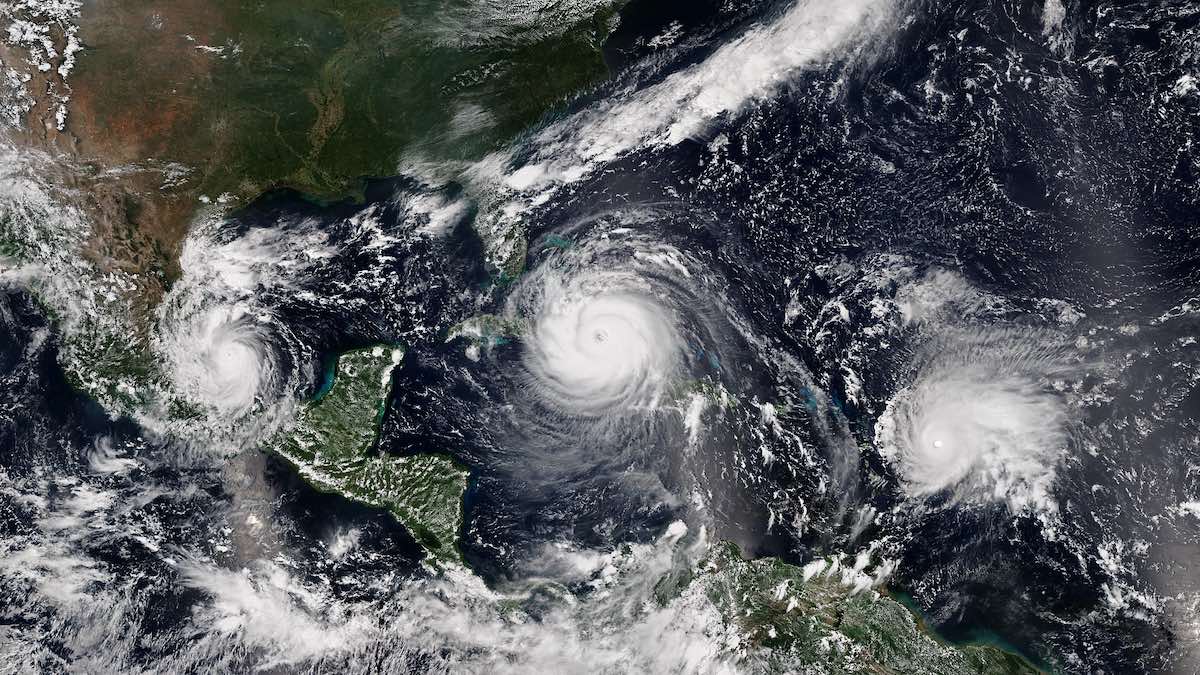How do Hurricanes Affect Marine Life?
Severe weather has major effects above and below the surface.

Early fall means hurricane season for those living near the Caribbean, South Atlantic or Gulf of Mexico. We know that hurricanes can be devastating on land—history is full of infamous storms that forever changed the areas affected (like Hurricane Andrew in Florida and Hurricane Katrina in the Gulf). This year we’ve already seen the devastating consequences of Dorian in the Bahamas, and hurricane season is far from over.
We know the damage hurricanes can cause on land. But what happens under the water? Unlike humans, fish don’t have mandatory evacuation orders. Some marine organisms can sense a storm is coming and move to safer waters: one study of grey triggerfish in North Carolina, for example, found the fish migrate to deeper waters as hurricanes approach. Those who stay in shallow waters swim faster than they usually do during the storm, then the fish return to normal behavior and abundance a few days after the storm. Another study found similar behavior in blacktip sharks—as storms approach and barometric pressure drops, the sharks swim to deeper waters until the storm is over.
While some large animals like sharks and dolphins might be able to swim away to less-turbulent waters, most marine organisms remain to face the storm.
Here are a few ways hurricanes can affect marine organisms:
Huge waves stir up the ocean floor.
Hurricanes generate massive waves that can reach up to 60 feet high and can affect ocean habitats 300 feet below the surface. Waves can topple or even more rocks and coral, which damages the structure of coral reef habitats. A 2017 study in Florida and Puerto Rico found that two coral species that provide important structure in nearshore reefs (Acropora cervicornis and Orbicella annularis) were greatly impacted after Hurricanes Irma and Maria. Animals that are fixed to the ocean floor, like anemones and sponges, can die by being smothered in sand or hit by tumbling rocks. It’s not fun for free-swimming animals, either, who can get caught up in undercurrents and tossed into rocks and other structures. These powerful waves also bring up colder waters from the deep—this water has less dissolved oxygen than surface water, causing animals to suffocate and die.
Heavy rains change salinity and oxygen levels.
Hurricanes bring heavy rains, which often dump on an area in a short time period. The wettest hurricane on record was 2017’s Hurricane Harvey, which poured over 60 inches of rain in Texas, resulting in massive flooding that displaced tens of thousands of people. Large amounts of freshwater inundating marine ecosystems in a short period of time can alter the salinity of the seawater, resulting in fish die-offs. A study by Florida Fish and Wildlife found that two 2004 hurricanes resulted in a drop in salinity from 26% to 15% in the Indian River Lagoon. During those two hurricanes, the fish community changed immediately following the hurricane, but scientists found that it had returned to normal after several weeks
Damage on land could increase pollution.
Hurricanes damage infrastructure and flood terrestrial environments, leading to increased runoff of toxins and pollution into the ocean. Runoff of fertilizer, pet waste and chemicals can help fuel harmful algal blooms, which can create dead zones and suffocate marine life. In North Carolina during Hurricane Florence in 2018, at least 50 hog lagoons, or ponds of hog waste, overflowed and sent millions of gallons of hog feces into the surrounding waterways. Coastal flooding could also introduce even more marine debris, which can entangle or be consumed by marine life.
Problems for marine organisms mean problems for the communities and industries who rely on them. Hurricanes can cause fish die offs and destroy commercial and recreational fishing gear, which can have catastrophic effects on the fishing industry. In 2017, Hurricanes Irma and Maria caused $95 million in damages in Florida fishing communities alone, and damaged commercial fishing vessels accounted for 45% of the losses. NOAA estimated $98 million in lost revenue—a substantial number in a state that relies on the billions of dollars brought in by commercial and recreational fisheries every year.
Discussing and preparing for the effects of hurricanes on fisheries and the communities who rely on them is crucial. This is especially true because these types of storms are projected to become more intense as the ocean warms, as we learned in the recent “Special Report on the Ocean and Cryosphere in a Changing Climate” or SROCC report released by the Intergovernmental Panel on Climate Change. Hurricane season this year is far from over, but here’s hoping that the ocean—and the communities who rely on it—stay safe!